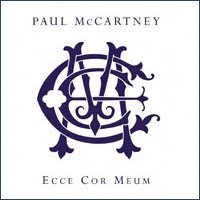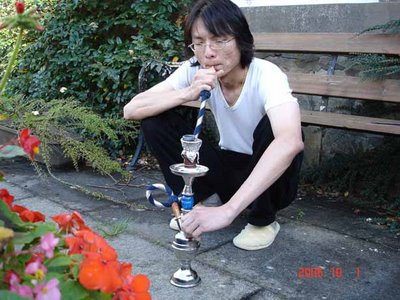 While working on the last two albums, a towering project was under incubation. In 1998, he was invited by Anthony Smith, the former President of Magdalen College Oxford, to compose a choral piece for a new concert hall of the college. Eight years later after the commission had been accepted, Paul's fourth full-length classical work, Ecce Cor Meum (Behold My Heart), for choir and orchestra in four movements, with an interlude featuring oboe solo, was released by EMI Classics on the 25 of September 2006.
While working on the last two albums, a towering project was under incubation. In 1998, he was invited by Anthony Smith, the former President of Magdalen College Oxford, to compose a choral piece for a new concert hall of the college. Eight years later after the commission had been accepted, Paul's fourth full-length classical work, Ecce Cor Meum (Behold My Heart), for choir and orchestra in four movements, with an interlude featuring oboe solo, was released by EMI Classics on the 25 of September 2006. This album is produced by John Fraser and recorded at the legendary Abbey Road Studios. Gavin Greenaway conducts the Academy of St Martin in the Fields, the Boys of King’s College Choir (Cambridge), the Boys of Magdalen College Choir (Oxford) and London Voices.
Since Ecce Cor Meum is sort of 'classical' classical music, rather than 'contemporary', 'atonal' or 'avant garde' classical music, composing such a work requires compositional techniques, such as harmony, counterpoint, orchestration, musical form and so on. I suppose either Paul is a great musical mastermind so he doesn't need any musical theories when composing, or he has actually spent some time hitting the books and then brought his own musical experience into theories.
Although I was never a pupil of music nor did I read music at any institution, I familiarise myself with all sorts of compositional techniques through endless reading and experimenting. Nevertheless, I can't compose an oratorio.
Hail Paul.

 The Western classical singing style, or precisely the bel canto, is characterised by even vocal quality with the greatest amount of resonance along the whole of a singer’s voice range and every singing note smoothly merged with the next to produce continuous lines. To achieve this, a singer has to utilise all resonating cavities properly, maintain a fine balance among various voice registers, and develop seamless transitions between registers. Singing in this style, one is required to be able to place the head voice down to the notes that are normally produced as the chest voice, and vice versa. In other words, a trained vocalist would adjust the amount of resonance in different cavities to gain consistent tone quality throughout the singing range. For more favourable resonance, the larynx is lowered to expand the bottom of the pharynx and sometimes there are even adjustments in the usual pronunciation of vowels.
The Western classical singing style, or precisely the bel canto, is characterised by even vocal quality with the greatest amount of resonance along the whole of a singer’s voice range and every singing note smoothly merged with the next to produce continuous lines. To achieve this, a singer has to utilise all resonating cavities properly, maintain a fine balance among various voice registers, and develop seamless transitions between registers. Singing in this style, one is required to be able to place the head voice down to the notes that are normally produced as the chest voice, and vice versa. In other words, a trained vocalist would adjust the amount of resonance in different cavities to gain consistent tone quality throughout the singing range. For more favourable resonance, the larynx is lowered to expand the bottom of the pharynx and sometimes there are even adjustments in the usual pronunciation of vowels. Do I look like Mr Bean in any way? I don't know, but somehow more and more Taiwanese friends have been telling me that I'm Taiwanese Mr Bean ever since my fiancée made this comment long time ago.
Do I look like Mr Bean in any way? I don't know, but somehow more and more Taiwanese friends have been telling me that I'm Taiwanese Mr Bean ever since my fiancée made this comment long time ago. Of course I don't fall into hilarious situations, nor do I cook up any schemes or contrivances in the way Mr Bean does to solve problems. However, somehow, I start having silly and quizzical expression on my face when I feel disoriented or stranded in a sticky situation, or after I screw up something. Even worse, my hands also begin wagging in a moronic way.
Of course I don't fall into hilarious situations, nor do I cook up any schemes or contrivances in the way Mr Bean does to solve problems. However, somehow, I start having silly and quizzical expression on my face when I feel disoriented or stranded in a sticky situation, or after I screw up something. Even worse, my hands also begin wagging in a moronic way.














